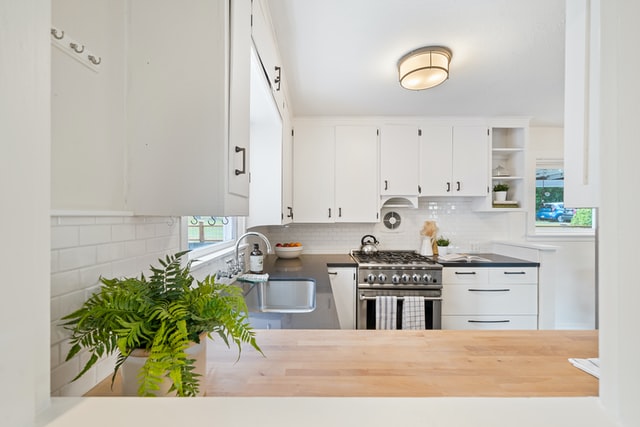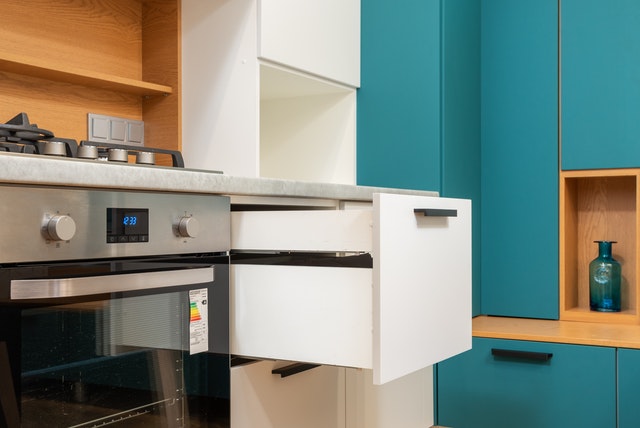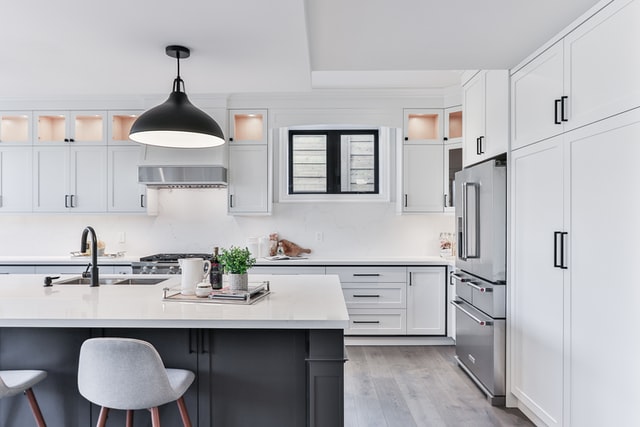Kitchen Drawers vs. Cabinets: Which Is Best for Your Kitchen?
Most older kitchens feature simply cabinets, both below and above the counter, and while this is the most cost-effective way to add kitchen storage, it isn’t necessarily the best option for modern life. However, before you get rid of all your shelves and replace them with drawers, consider your needs, preferences, and how you use your kitchen.
Kitchen drawers vs cabinets
Is it best to continue with normal cabinets with doors and pull-out shelves when it comes to cabinet styles, or will deep drawers help manage your kitchen supplies? For anything from pots and pans to plates and coffee mugs, many individuals are choosing for drawers. What makes drawers so popular, and are they always the best option?
When planning a kitchen redesign, think about how often you use your kitchen, who uses it, and what you plan to store inside. Storage is vital for maintaining a well-organized kitchen, whether you use it frequently, cook a few times a week, or only entertain once in a while. The type of storage that is best suited to your new kitchen design may be determined by how you want to use it.
If you have a lot of plates, glasses, and coffee supplies for everyday use and entertaining, you’ll need a lot of storage space. There are some basic requirements for kitchen storage, but you can modify it with additional storage areas and accessories to meet your specific needs.
Kitchen drawers instead of cabinets
1.Drawers are far more convenient than cabinets
Because a typical lower cabinet is two feet deep, it’s simple for things to get pushed to the back and forgotten. Is it really necessary to take everything out of the house simply to get to that one pot in the back of the cabinet? Not to add that digging out what you’re seeking will require you to be bending down or entirely on your knees due to the location of lower cabinets. Drawers overcome this difficulty by sliding out, making all objects accessible, even those at the back of the drawer.
2. Drawers help you stay organized.
Inside a doored cabinet, space is essentially a giant box, which might result in an unorganized jumble of cookware. This not only frustrates you and makes it difficult to find what you need, but it may also be embarrassing if you have friends or family around to help you cook for the holidays. Adding dividers and stacking plates, lids, bowls, pans, and utensils is considerably easier with drawers, resulting in a neat and orderly setup.
3. Drawers allow you to make greater use of your space.
Having one larger drawer or even two stacked drawers gives more usable space than a standard cabinet since you can stack objects inside the drawers and then pull those drawers out. This means you’ll be able to cram a lot more stuff into the same amount of room as you would with cabinets.
4. Drawers add a contemporary touch.
With so many different drawer styles to choose from, a set of deep drawers beneath the counter creates a sophisticated, modern effect. If you decide to preserve classic upper cabinets, using drawers instead of lower cabinets helps break up the monotony of the design. Keep in mind that if you choose to go with the trendy option of open shelving instead of upper cabinets, having drawers underneath will compensate for the storage space you’ll lose up at the top space.
Cabinet vs drawer
Access: It’s much easier to replace and retrieve anything below the waist from the top down than from the front. Kneeling and burrowing around low to the earth are not my favorite activities. There’s a reason why, rather than the traditional front-loading mechanism, more people are opting for dishwashers with drawer systems. As a result, I vastly prefer kitchen islands with drawers over cabinets. Drawers came out on top.
Drawers are difficult to use for storage above the waist. The higher you go, the more difficult it is to get to. This is why, in any cabinet arrangement, all top cabinets are either cupboards with shelves or open shelving. Cabinets came out on top.
Appearance: I like the drawer lines and the extra hardware that comes with them. An asymmetrically built low bank of drawers with beautiful hardware looks fantastic… much better than a low bank of cabinets. Drawers came out on top.
Small Item Organization: Utensil trays and other drawer organizers make it simple to organize smaller drawers for tiny objects. It’s simple to design useful sections that make finding and organizing items a breeze. Drawers came out on top.
Organization of Large Goods: Small drawers for small items can be very well organized. Large, deep drawers for large things like pots and pans, on the other hand, are more difficult to organize. Finding, retrieving, and replacing objects becomes harder as they become deeper. It’s like a large chest that has turned into a vast dumping ground for stacks of items. Cabinets came out on top.
Variety of Items: There’s a reason glasses are normally kept in cupboards rather than drawers. You may need plastic kids’ cups, a wine glass, and water glasses for a lunch. All of these items can be kept in a tall cabinet with shelves. Glassware of this sort cannot be conveniently stored in a drawer. Cabinets came out on top.
Volume: Because drawers have four sides, they have less storage space than cupboards. Cabinets came out on top.
Durability: All of us have faced draws falling or pulling off the rails or getting stuck at some point or other. This is inconvenient. In our kitchen, one of the drawer faces has entirely broken off. To fix that, we’ll need a completely new drawer, which isn’t always simple to come by with custom cabinets. Even if you use popular IKEA cabinet systems, you’ll have a hard time finding a single drawer. You can either fix the drawer (which is a big job) or buy a new one. Cabinets came out on top.
Cupboards are significantly less expensive than drawers. A cupboard’s face is made up of one board, whereas drawers are made up of five components plus the rail system. Cabinets came out on top.
Conclusion
Cabinets are a better storage solution in general, but I prefer drawers for below-the-waist storage. As a result, if I were to build a new kitchen in the future, I would include more drawers below the waist and employ all cupboards with shelving above the waist.



